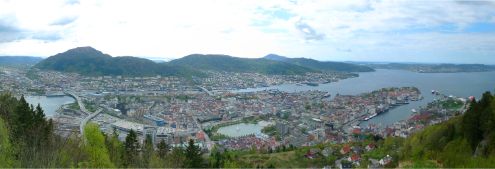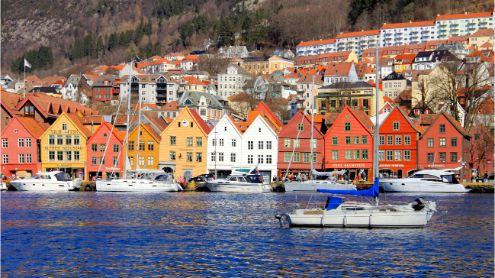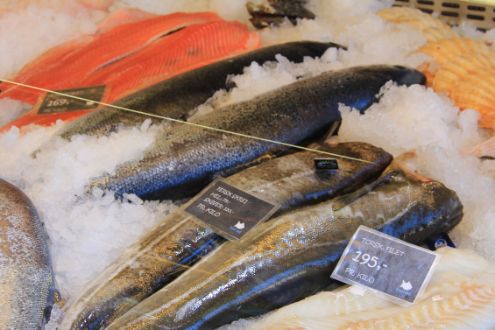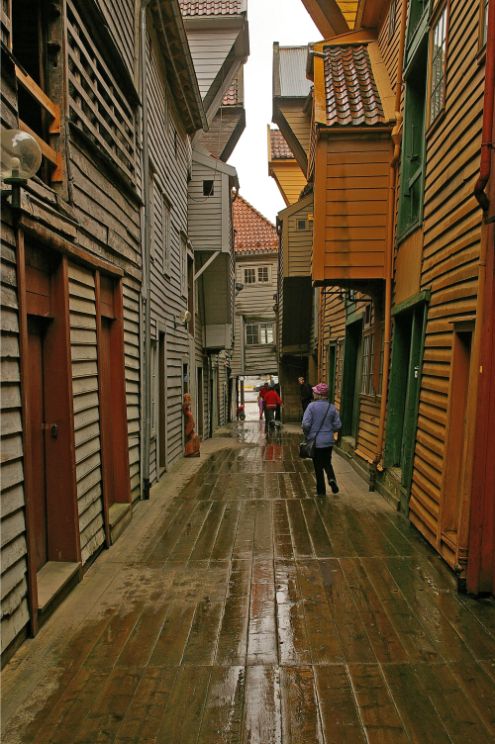Founded more than 900 years ago on the southwestern coast, Norway’s second largest city of Bergen is lively and vibrant with a small-town charm. It’s easy access to both the sea and mountains from the city, which supports numerous museums, art galleries and a range of dining options, and the student population adds a youthful mood.

Image Credit: Dimitris Karagiorgos
The city centre is surrounded by seven mountains; take the Fløibanen funicular to the top of Mount Fløyen for a magnificent view of Bergen from 320 metres above sea level. From here, you can appreciate the city nestled below the mountains at the entrance to Norway’s fjords. Back down in the foothills, enjoy a three-hour fjord cruise to Osterfjord and through the narrow Mostraumen; cruise between the steep mountains and see the powerful, ice-cold waterfalls.

Image Credit: Christine Wang
Back on land, one of the highlights of the city is Bryggen, which is included on the UNESCO World Heritage Site list. Although the area has historically been damaged by many fires, the current buildings were constructed in 1702 on foundations which have existed since the 12th century. The German Hanseatic League set up an office at Bryggen in 1360 and the area dominated trade for almost 400 years.

Image Credit: Michela Simoncini
The Hanseatic Museum and Schøtstuene explains how people lived in Bryggen during that important period of trade, but Bryggen is still very much a living and beautiful area of Bergen to explore today, with numerous cafés, restaurants and shops within the narrow alleyways and colourful overhanging buildings. Today, as the busiest seaport in the country, Bergen still relies on the sea for trade; the outdoor Fish Market in the middle of the city centre showcases the abundance of treasures brought in from the sea - fish, shellfish, fruit, vegetables, and crafts.

Image Credit: Michela Simoncini
Bergen was Europe’s largest wooden city during the 1800s, and the Old Bergen Museum brings to life what it would have been like at that time; 55 wooden houses which were formerly located in the centre of the city were moved to this location for their preservation. Visitors can walk around, peak in windows, and enjoy some of the theatrical reenactments of 19th century life.

Image Credit: jelm6
Fine food is one of the most attractive reasons to visit the city, which is rated as a UNESCO City of Gastronomy. Aside from the outstanding cafe culture and traditional local “skillingsboller” cinnamon buns, the availability of fresh seafood and fantastic inland ingredients have led to a new wave of cuisine in this Norwegian city. Perhaps try the Enhjørningen (Unicorn) restaurant in Bryggen for seafood, the classic Restaurant 1877 (dated after the year the meat market opened) for nostalgic and creative Norwegian-inspired dishes, or the traditional Bryggeloftet & Stuene which has been popular with locals since it opened in 1910 - try the fish soup and the famous Lutefisk.
Title Image Credit: Dimitris Karagiorgos (Image Cropped)